Don't Look Behind You Read online
Page 19
“I knew there was no place Joann could have gone,” Pat says today. “She had no money except for about six dollars and fifty cents. She loved her kids so much that nothing could have made her abandon them—nothing beyond her own death. She would have been so worried about what would happen to them if they were alone with Bob.”
Duncan Bonjorni was troubled when he heard from a young woman who had babysat with Nick, Kandy Kay, and Ty the night their mother disappeared. She and a girlfriend had looked through Joann’s closet, admiring her clothes—especially a sparkling blue cocktail dress that had been one of Joann’s favorites.
“When the babysitter looked for that dress the next day,” Bonjorni recalls, “it was gone. I sometimes wonder if Bob put it on Joann after he killed her. No way to prove it, though.”
There was another possibility; perhaps the self-made widower had deliberately removed the cocktail dress, hoping it would validate his story that Joann had left him to run off and live the high life with another man.
Belatedly, Bob Hansen filed a missing person report on Joann on August 15. Joann had been gone five days, and he may have realized that spouses who don’t even attempt to find their missing mates become suspect in the eyes of law enforcement.
Chapter Eight
A NASTY DIVORCE—IN ABSENTIA
Weeks after she disappeared, Joann’s Chevy Biscayne was located in the lower Queen Anne Hill neighborhood in Seattle. So there was something left behind, but it’s doubtful it was Joann who abandoned it. It was filthy and cluttered with junk, food wrappers, cigarette butts, and empty bottles. The windows were open and the interior was covered with dust. All the tires had gone flat.
“Joann kept her car immaculate,” Patricia Martin insists. “She would never have let it get in that condition.”
There were no usable fingerprints in the Chevrolet, nor was there any physical evidence that might have given the Western Washington Crime Lab something to examine with the tools they had in 1962. The use of DNA in solving crimes or identifying people was more than thirty years in the future, and there was no nationwide clearinghouse for fingerprints, nothing like the AFIS (Automated Fingerprint Identification System) structure that exists now. In a sense, 1962 was in the dark ages of forensic science.
More than likely, the suspect(s) in Joann’s disappearance had abandoned the car with keys in it, an open invitation to car thieves and/or joy riders.
Life went on in the brown house—without Joann. Bob hired the first of a series of babysitters to watch Nick, Kandy Kay, and Ty.
“There were so many babysitters,” Ty remembers. “We had tons of babysitters, so many that I can’t possibly remember them all.”
Joann’s divorce action against Bob was still on Judge Story Birdseye’s docket, and November 21 was the date for hearing evidence.
By October 23, Bob Hansen had hired a new attorney and filed a cross-complaint for divorce. He signed an affidavit he gave to Duncan Bonjorni in which he disputed all of Joann’s claims in her May divorce filing.
He asserted: “The Plaintiff served her complaint upon me on or about the eighth day of August, 1962, and I thereupon voluntarily vacated the family residence. Shortly thereafter—on or about the tenth day of August, the Plaintiff disappeared, leaving the three minor children under [my care.] To present times, the Plaintiff has not reappeared, and the minor children have been maintained by me.
“The Plaintiff, Joann E. Hansen had, for some time prior to her disappearance, been nervous, upset, and distraught, and seemed discontented with our life, including our marital relationship. I repeatedly attempted to reconcile any differences and maintain a wholesome and pleasant family relationship and environment. At no time did I give the Plaintiff any reason to be fearful for her well-being and safety, nor did I ever in any manner threaten the Plaintiff.
“The disappearance of Joann E. Hansen was most surprising and shocking to me. It was not until the preparation of statements of financial condition for the United States Treasury Internal Revenue Service that it came to my attention that the Plaintiff—who handled the collection of income from rental properties—had apparently withheld approximately $8,000, which funds were received and receipts written, but are unaccounted for in deposits made and were never in my hands.
“I believe that Joann E. Hansen is presently alive and upon her past actions, together with her emotional instability, I further believe that she chose to desert me and our three minor children for reasons known only to her to live elsewhere and not proceed with the divorce action.”
Putting a halo on his own head, Bob Hansen ended his affidavit by saying that he had been managing all the property involved and that his “prudent business acumen” had retained and/or increased the property values.
Since no one knew where Joann Hansen was, or even if she was alive or dead, Duncan Bonjorni decided to proceed with the divorce in absentia. He arranged for Donald Eide to serve as Guardian Ad Litem to represent Joann’s interests.
Legally, it didn’t matter that she wasn’t there to testify.
Superior Court Judge Story Birdseye said he found the divorce case between the Hansens interesting since Joann Hansen had disappeared shortly after she filed for divorce.
“Whether she is living or not, no one can say. If [Joann’s attorneys] discontinue their motion, the parties would remain married, and if Mr. Hansen dissipated the present community estate, leaving nothing for Mrs. Hansen when—and if—she returns, they might be subject to criticism.”
Judge Birdseye declared that he felt justified in concluding that Joann had suffered violence at her husband’s hands, and “sufficient personal indignities” to establish grounds for divorce.
“Accordingly, I will terminate the marriage by awarding a decree of divorce to the plaintiff.”
Bob Hansen had already withdrawn his cross-complaint for divorce.
The judge was in a difficult position. Since Joann Hansen was missing, he couldn’t award custody or visitation to her. Neither did he deny them. He said that they must all wait to see what Joann’s mental condition was if she ever came home.
As for the division of property, Judge Birdseye considered Bob’s demand for every single piece of property, all contracts, all vehicles, and the used furniture they had owned.
Donald Eide, speaking for Joann, asked for the small white house behind the veterinary clinic, the Willows Apartments with the ten small rental units, a $3,000 contract on one rental house, and legal fees of less than $1,000 owed to Duncan Bonjorni.
Judge Birdseye ruled that the community estate—minus the mortgages and encumbrances Bob Hansen presented—was worth $70,000. Since Bob was raising Nick, Kandy Kay, and Tyler, he got 60 percent of the estate, and Joann was awarded 40 percent. Her share was $27,740, and it came as a lien against certain properties if Bob should sell them. In essence, she got a small house and a barn that was located on the Green River in Kent, Washington.
If Joann Hansen never returned, her share was to be held in trust for her children.
Patricia Martin maintains that if she could have, Joann would have shown up to get her share of the Hansen estate so she could take care of her kids.
“Tracking her social security number,” Pat said, “we found that she never took a job over all those years. Her social security number didn’t show up anywhere.”
When people choose—for whatever reason—to leave of their own volition, they invariably leave a paper trail: money missing from their bank accounts, applications for employment, driver’s licenses, gas card records. It isn’t that easy to just disappear.
Joann Hansen left nothing at all; she might as well have been abducted by aliens and whisked away in a spacecraft.
Although local gossip said that Bob had murdered Joann and hidden her body, he would have had to have done a clever job at that. No shred of her showed up.
There was never a real police investigation, only a haphazard missing complaint from a husband who didn’t seem that disturbed
that his wife might be in danger.
Although Bob had law enforcement acquaintances, he wasn’t close enough for any of them to pull back on investigating him. Some of them liked him well enough and even felt sorry for the troubles he had. Still, most of his male friends were cautious around Bob and didn’t want to get on the wrong side of him. His temper was legendary. He could do a lot of damage when he was blind with rage.
To the outside world, he was the guy whose wife had run off and left him to take care of three little kids alone.
And that, of course, was the image he wanted to portray.
Chapter Nine
COLLATERAL DAMAGES
For every victim of violent crime, there are almost always several more people who suffer from the fallout of the tragedy. No one can accurately predict what will happen to children who lose a parent, or who suffer from childhood abuse. Some can override their sadness and loss and become well-adjusted adults; others are traumatized forever after.
When Joann Hansen went out of her children’s lives, they lost the key person who had always made them feel loved and safe. Nick, Kandy Kay, and Ty were only four, three, and two, and Bob had to hire babysitters. He didn’t soften his answers to their questions about “Where’s Mommy?” Rather, he cruelly told them that their mother didn’t care about them—that she had run away from them and wouldn’t be back.
Nick Hansen was the oldest, nearly five, and he probably missed his mother the most. Although he had precious few memories of her, at least he had a few; his younger siblings had none at all.
“I can remember being in a car with my mother, and she was crying. Another time, she was taking me to the ocean. But that’s all that I recall—other than the feeling of being safe and warm in her arms—and her taking care of me.
“I recall asking my father where my mommy was—can see him clearly in my mind, sitting in his recliner chair. He didn’t want to talk about her at all. He just said, ‘She’s gone.’”
Strangely, Nick’s very earliest memory is not about his mother. Rather, Nick recalls an odd incident that he believes happened to one of the multitude of babysitters Bob Hansen hired.
“I don’t remember how it happened, but she accidentally cut her wrist and she must have sliced into an artery because I saw blood spurting all over the kitchen.”
What he really saw is a matter of conjecture. It’s quite possible that Nick is remembering his mother’s murder—but his mind would not allow him to recall Joann bleeding profusely.
After intensive therapy, Nick Hansen believes that his response to having his mother suddenly disappear from his life was to turn to “infantilism.” He didn’t want to be a big boy any longer; he wanted to wear diapers and eat baby food like Kandy Kay and Ty did.
He could not cope with his life as the oldest child in a home without a mother.
Kandy Kay and Ty felt the loss of Joann, too, but it was more diffuse. They were sometimes overwhelmingly sad, but they could not explain why. They were simply too young. When pressed, Bob Hansen told all three of his children that their mother had gone away and left them.
And they believed him. They had no other choice. With Joann out of their young lives, they no longer saw Patricia Martin either. Patricia had been like an aunt, even a second mother, but Bob would have nothing to do with her. All his children knew was that Bob was there; he cooked breakfast and supper. They still had Christmases, and their father sometimes took them on vacation trips. As always, he took dozens of photographs of himself and his children. It certainly looked as though they were a happy family—even though they didn’t have a mother.
That wasn’t remotely true.
It was almost as if Bob Hansen lived two lives. One was what happened inside the walls of his house—a life where he was cruel and abusive to his children—and the other was the world in the photographs he took, the pictures that showed a perfect little family.
After seven years passed, Joann Ellen Hansen was declared legally dead.
Ty Hansen remembers visiting at his uncle Ken Hansen’s house and playing with Ken and their aunt Lorene’s two daughters. “They had a real family—a real home. I always wished that I could be in a family like that. We had Thanksgivings and Christmases with them.
“Our life was, ah … isolated … that’s the only way I can describe it. We weren’t like other families at all.”
Nick, too, has good memories of being in his paternal uncle’s home for holidays. “They were all good to us,” he says. “And they had a player piano. I used to love that.”
Both the Hansen boys remember that their father took them and their sister on trips and vacations. “We were kids—we had fun on some of the trips,” Ty says. “We stopped asking about our mother because he didn’t like to hear anything about that.”
Patricia Martin could not forget Joann Hansen, and she didn’t want to. Every time she looked at the palm prints that Joann had pressed into the wet cement in the foundation of Pat’s house, she felt the pang of loss—and of frustration. Pat was afraid to confront Bob, but she called him fifty times a day, only to hang up when he answered. If all she could do was make him nervous, she was going to do that.
“He figured out soon enough that it was me calling him. He called the police, and they called me and told me to stop, that he was dangerous.”
If they thought he was dangerous, she wondered why they weren’t out looking for Joann.
Bob Hansen was eager to take his boys hunting and fishing, and as soon as they could hold a light rifle or a fishing pole, he took them with him to his favorite hunting spots, mostly on the other side of the Cascade Mountains, particularly Banks Lake in Grant and Douglas counties. They camped out, sped around lakes on a boat Bob owned, and went waterskiing.
Bob always insisted that they take a camera with them, and he took myriad photographs—at their camp sites or of his small boys holding up their unfortunate, dead and bleeding prey.
Although his hobbies were violent, Bob bragged that his children enjoyed their hunting trips with him. He appeared to be the epitome of the loving father who was doing his best to spend time with his motherless children. Joann had long since become known as the heedless, selfish mother who had followed her own dreams—even if it meant abandoning her children.
Joannn’s family, friends, and her attorney were convinced that wasn’t what happened, and they did what they could to find her. They had no luck. Neither did the private investigators who Joann’s parents hired. Bob wouldn’t talk to them, and they found no other paths they could follow.
Nick, Kandy Kay, and Ty didn’t know they had a half brother: Bobby Morrison. Nick and Kandy Kay might have had a vague memory of him from when they were toddlers, but Ty certainly wasn’t old enough to remember him. They didn’t know Patricia Martin. Nor did they know they had relatives on their mother’s side who loved them. Bob had cut all ties with anyone connected to Joann. Their father filled their world—figuratively and actually. He was so tall, so big, and his voice rumbled. He didn’t want them to bond with anyone but him.
In his way, he may have cared for them more than he cared for anyone else in his life—but Bob Hansen seemed incapable of any real sensitivity except how he himself felt. He acted without thinking, particularly when he was angry. He seemed incapable of empathy, never understanding how other people felt—even his own small children. He gave them everything material that he thought they needed—but, most of all, he lacked tenderness.
And they needed that.
When Nick, Kandy Kay, and Ty were barely out of Mrs. Moses’s private kindergarten in Des Moines, they were pretty much on their own. They no longer had babysitters. Bob was making good money in the construction boom that hit America in the sixties and early seventies, and that meant long hours on the job. His three children quickly learned to fend for themselves.
“Nobody knew it,” Ty says, “but we walked to Mrs. Moses’s kindergarten class, which was in the basement of Des Moines Elementary. It was about seven or
eight blocks from our house, and we had to cross Kent Des Moines Road first, which was a really busy street. Sometimes a babysitter would see us across that road, and sometimes not.”
In the annual photos that Mrs. Moses had taken of her class, the Hansen children wore clothes that were neat and clean, their hair was cut, and no one could pick them out as children who were basically taking care of themselves. Nick and my daughter, Leslie, were in the same kindergarten class, and years later Ty and my son, Andy, were friends in junior high school and played baseball together.
Oddly, perhaps, none of my five children recall Kandy Kay. That may be because the Hansen children attended another elementary school in the Highline school district. Students whose addresses fell north of the Kent Des Moines Road could choose between Des Moines Elementary and Parkside. All three of the Hansen kids chose Parkside, although they would meet up again with their friends from Rilda Moses’s kindergarten when everybody went to Pacific Junior High School.
Kandy Kay was obviously her father’s favorite, and he let her do what she wanted.
In 1967 Barbara Snyder (née Kuehne) moved to Des Moines with her family from their former home in Cleveland. On her first day at Parkside School, her third grade teacher asked for volunteers who would show “the new girl” around the school. Kandy Kay Hansen raised her hand immediately, and that was the beginning of a lifelong friendship.
“Kandy was so good to me,” Barbara Kuehne Snyder recalls more than forty years later. “I missed Cleveland and my friends there, but I soon felt at home in Des Moines.”
Barbara spent a lot of time in the brown house on Marine View Drive. Bob allowed his children to bring their friends home after school and on weekends and holidays. He himself was often working, but he laid down rules that they all had to follow.
Barb Snyder remembers that all of the Hansen children were very talented. “Kandy played the saxophone and I played the clarinet. Nick was a musical genius—a genius at almost everything, although he didn’t spend much time with us.

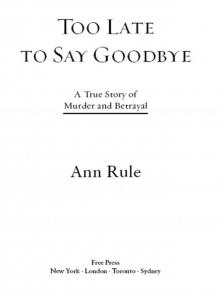 Too Late to Say Goodbye: A True Story of Murder and Betrayal
Too Late to Say Goodbye: A True Story of Murder and Betrayal Green River, Running Red
Green River, Running Red Bitter Harvest
Bitter Harvest Dead by Sunset: Perfect Husband, Perfect Killer?
Dead by Sunset: Perfect Husband, Perfect Killer? Lust Killer
Lust Killer And Never Let Her Go: Thomas Capano: The Deadly Seducer
And Never Let Her Go: Thomas Capano: The Deadly Seducer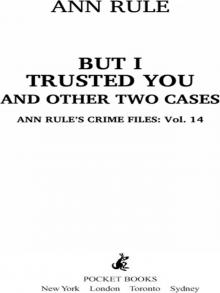 But I Trusted You and Other True Cases
But I Trusted You and Other True Cases Smoke, Mirrors, and Murder and Other True Cases
Smoke, Mirrors, and Murder and Other True Cases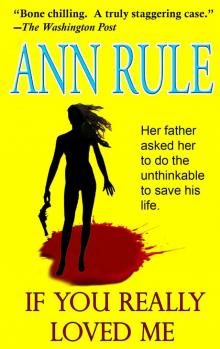 If You Really Loved Me
If You Really Loved Me Kiss Me, Kill Me and Other True Cases
Kiss Me, Kill Me and Other True Cases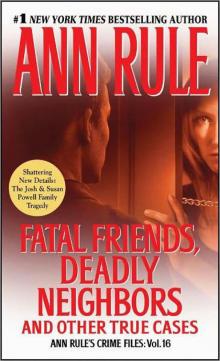 Fatal Friends, Deadly Neighbors and Other True Cases
Fatal Friends, Deadly Neighbors and Other True Cases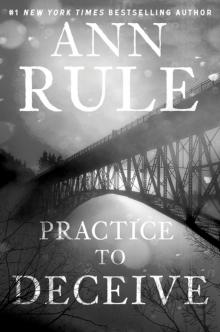 Practice to Deceive
Practice to Deceive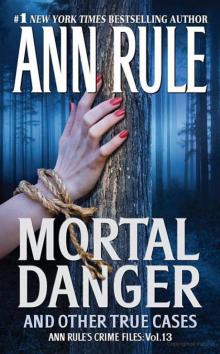 Mortal Danger and Other True Cases
Mortal Danger and Other True Cases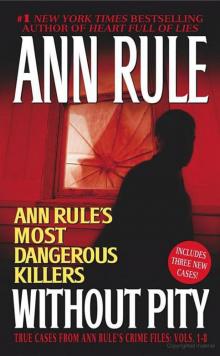 Without Pity: Ann Rule's Most Dangerous Killers
Without Pity: Ann Rule's Most Dangerous Killers Everything She Ever Wanted
Everything She Ever Wanted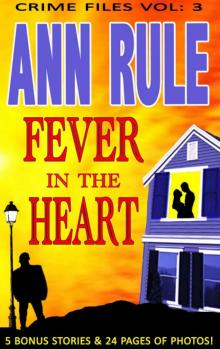 A Fever in the Heart and Other True Cases
A Fever in the Heart and Other True Cases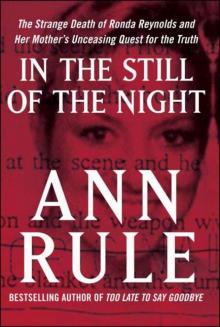 In the Still of the Night
In the Still of the Night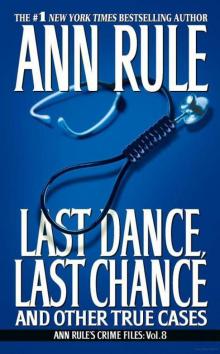 LAST DANCE, LAST CHANCE - and Other True Cases
LAST DANCE, LAST CHANCE - and Other True Cases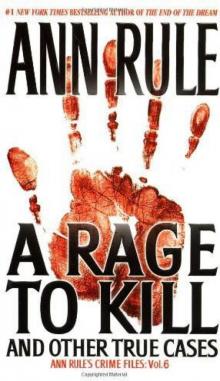 A Rage to Kill
A Rage to Kill The I-5 Killer
The I-5 Killer The Stranger Beside Me
The Stranger Beside Me Everything She Ever Wanted: A True Story of Obsessive Love, Murder, and Betrayal
Everything She Ever Wanted: A True Story of Obsessive Love, Murder, and Betrayal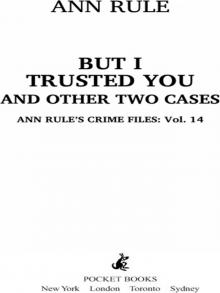 But I Trusted You
But I Trusted You Without Pity
Without Pity Kiss Me, Kill Me
Kiss Me, Kill Me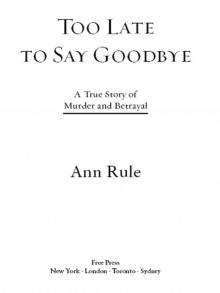 Too Late to Say Goodbye
Too Late to Say Goodbye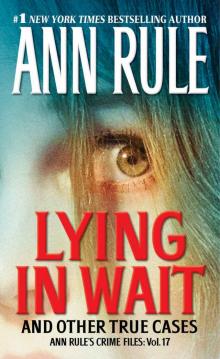 Lying in Wait
Lying in Wait Fatal Friends, Deadly Neighbors
Fatal Friends, Deadly Neighbors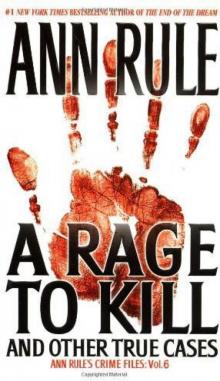 A Rage to Kill: And Other True Cases
A Rage to Kill: And Other True Cases And Never Let Her Go
And Never Let Her Go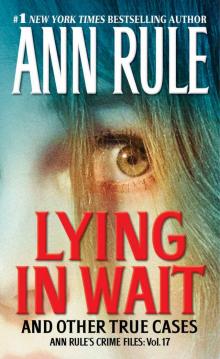 Lying in Wait Ann Rule's Crime Files Vol.17
Lying in Wait Ann Rule's Crime Files Vol.17 Blood Secrets: Chronicles of a Crime Scene Reconstructionist
Blood Secrets: Chronicles of a Crime Scene Reconstructionist No Regrets
No Regrets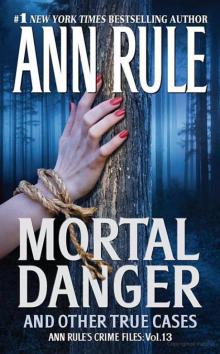 Mortal Danger
Mortal Danger But I Trusted You: Ann Rule's Crime Files #14
But I Trusted You: Ann Rule's Crime Files #14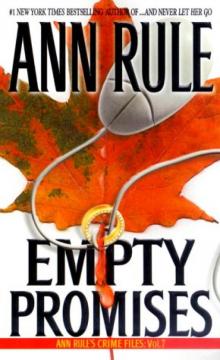 Empty Promises
Empty Promises Dead by Sunset
Dead by Sunset Last Dance, Last Chance
Last Dance, Last Chance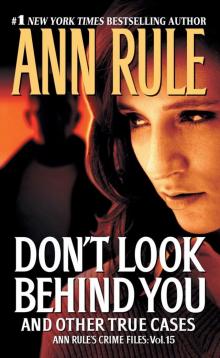 Don't Look Behind You
Don't Look Behind You